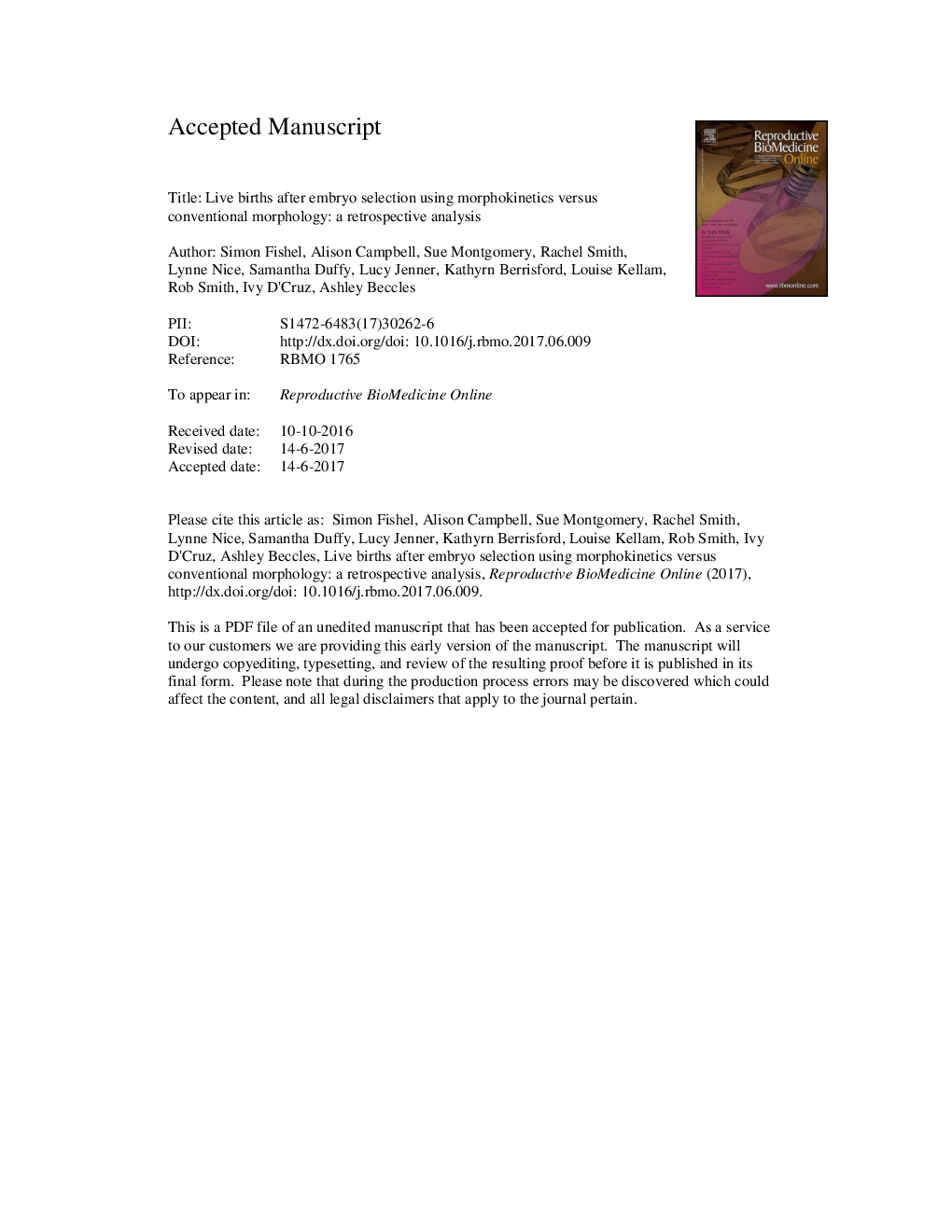| Article ID | Journal | Published Year | Pages | File Type |
|---|---|---|---|---|
| 5696579 | Reproductive BioMedicine Online | 2017 | 38 Pages |
Abstract
The increasing corpus of clinical studies using time-lapse imaging for embryo selection demonstrates considerable variation in study protocols and only limited-sized study cohorts. Outcome measures are based on implantation or clinical pregnancy; some predict blastulation from early cleavage-stage data, and few have evaluated live birth. Erroneously, most studies treat the embryos as independent variables and do not include patient or treatment variables in the statistical analyses. In this study, cohort size was 14,793 patients and 23,762 cycles. The incidence of live birth (n = 973 deliveries) after embryo selection by objective morphokinetic algorithms was compared with conventional embryology selection parameters (n = 6948 deliveries). A 19% increase in the incidence of live birth was observed when morphokinetic data were used to select embryos for the patient cohort aged younger than 38 years (OR 1.19 with 95% CI 1.06 to 1.34) using their own eggs, and an increase of 37% for oocyte recipients aged over 37 years (OR 1.370; 95% Cl 0.763 to 2.450). This is the largest study of the prospective use of time-lapse imaging algorithms in IVF reporting on live birth outcome, although the nature of purely a closed system versus standard incubation could not be assessed.
Keywords
Related Topics
Health Sciences
Medicine and Dentistry
Obstetrics, Gynecology and Women's Health
Authors
Simon Fishel, Alison Campbell, Sue Montgomery, Rachel Smith, Lynne Nice, Samantha Duffy, Lucy Jenner, Kathyrn Berrisford, Louise Kellam, Rob Smith, Ivy D'Cruz, Ashley Beccles,
